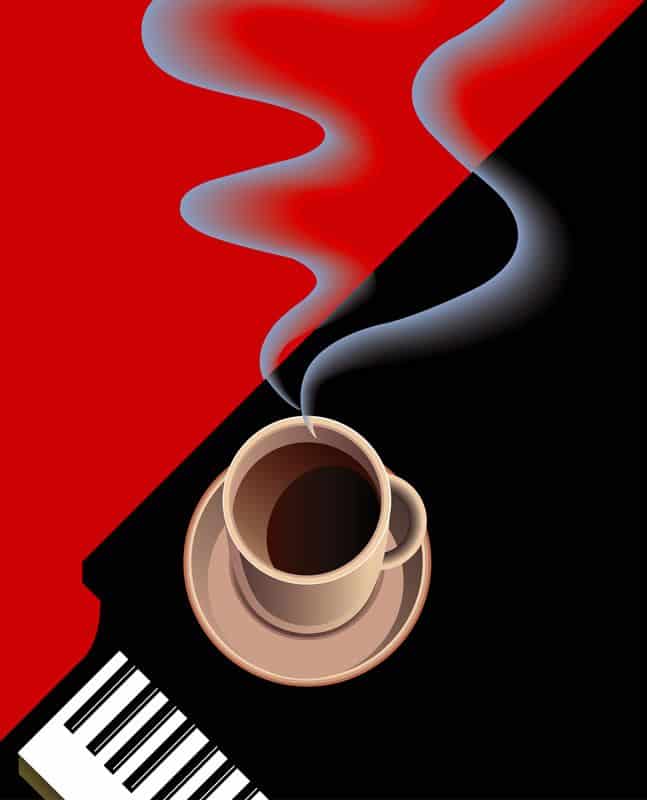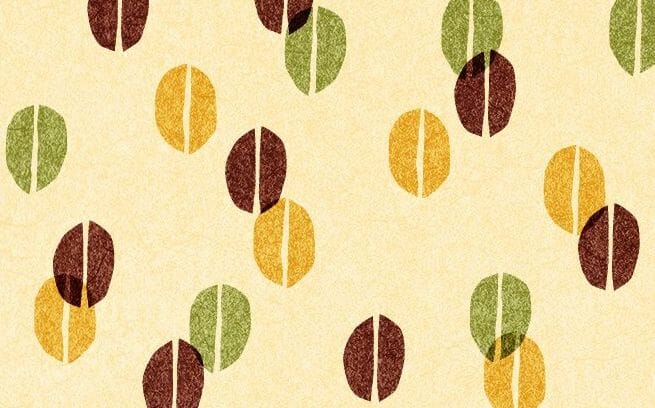Types of Coffee: Blends from Across the World & Their Flavor Notes
Do you know your blends from your single origin? Your Arabica coffee from your Robusta coffee? Or your light roast from your dark roast? At Son of a Barista we love passing on tradition and artisanal trade, so join us as we uncover different types of coffee blends. Our Son of a Barista guide will help you be your own home barista, as well as a pro at navigating Italian coffee shops!
Coffee is so much more than just your basic black drip topped with a little scoop of sugar or splash of milk. Blends and techniques – it can all be a little bit like hearing Italian for the first time.
We want to help you get your ear used to the language. So if you’re trying to recreate a refined Italian espresso bar experience at home, it’s helpful to have a deeper understanding of what’s going into your cup. That’s why we’re doing a deep dive into different kinds of coffee, from blends and beans to roasts!

What is a coffee blend?
A coffee blend is coffee made with coffee beans that originate from more than one place. Place can refer to coffee beans from different countries but place can also mean a micro-level division of the same country. To be more specific, place can mean coffee beans from different regions of the same country, or different small areas within the same producing region. This micro-level division of a place can even refer to the varying altitudes on the same producing farm!
Why would you blend coffee?
Now, just because you mix up a bunch of beans doesn’t mean it’ll taste good. The goal is to analyze the best attributes of each coffee and blend them together precisely to create a balanced, delectable, and consistent flavor profile. The result should be a coffee blend that no single origin coffee could replicate.
However, producing a consistent specialty coffee blend takes time and constant practice to achieve. That’s why artisanal coffee producers like Son of a Barista always experiment with various blend recipes and work to ensure their blends remain flavorful. When we create our coffee blends at Son of a Barista, we combine different flavors to strike overall balance, while producing complexity of flavor.
Our blends
Cremoso
At once easygoing and exciting, our Son of a Barista cremoso espresso pod is crafted as a blend of Arabica from South America and Africa, along with Robusta from Southeast Asia. The combination of 50% Arabica beans from South America and Africa, and 50% Robusta beans from Southeast Asia blended together in a perfect Son of a Barista coffee pod, creating a balanced, spicy, and fruity aroma, combined with toasted notes, resulting in an enveloping and creamy espresso.
Cremoso Decaf
For those who don’t want a caffeine kick, we’ve crafted this decaffeinated blend to fully capture the finest points of our cremoso espresso. The easygoing Son of a Barista cremoso decaf is a blend of 50% Arabica from South America and Africa, along with 50% Robusta from Southeast Asia. You’ll get all of the spicy and fruity aromas combined with toasted notes as you get from our original cremoso pod – just without the caffeine.
Aromatico
Named “aromatic” for a reason, Son of a Barista’s Aromatico coffee pod consists of a blend of Arabica beans from Brazil and Africa. Our delicious, aromatic Aromatico coffee pod offers bold scents, and rich, nuanced flavor. In a delightful cup of Aromatico, you’ll notice aromas of dried fruits and nuts, with hints of rich cocoa.
Single origin
In contrast to a coffee blend, a single origin coffee comes from just one place. This doesn’t mean that it has less flavor, though! Single origin is a small phrase with a big definition. The meaning is often simplified to a coffee that’s sourced from one single producer, crop, or region in one country. The beans can still boast of flavors and aromas even though they are not blended. A good example is Son of a Barista’s single origin puro coffee pod.
Our single origins
Puro coffee
Deliciously potent, our Son of a Barista puro coffee pod is created using single-origin 100% Ethiopian Sidama Arabica beans. Ethiopia was the world’s first coffee bean exporter, and it’s still a coveted, almost mythical source. Our puro coffee pod is defined by citrus notes, bergamot, candied and tropical fruit, complemented by elegant floral aromas.

Types of coffee beans
Arabica
Arabica coffee, also known as the Arabian coffee, is a species of coffee plant in the coffee and madder family Rubiaceae. It is believed to be the first species of coffee to have been cultivated, and is currently the dominant cultivar, representing about 60% of global production.
Arabica coffee originates from Ethiopia and was first cultivated in Yemen, and documented by the 12th century. The species is widely naturalised in areas outside its native land, in many parts of Africa, Latin America, Southeast Asia, China, and assorted islands in the Caribbean and the Pacific.
History of Arabica
The first written record of coffee made from roasted coffee beans comes from Arab scholars, who wrote that it was useful in prolonging their working hours. The Arab innovation in Yemen of making a brew from roasted beans, spread first among the Egyptians and Turks, and later on found its way around the world.
Robusta
Robusta coffee, also known as Coffea canephora is a species of coffee that has its origins in central and western sub-Saharan Africa.
Robusta coffee grows indigenously in Western and Central Africa from Liberia to Tanzania and south to Angola. It was not recognized as a coffee species until 1897, over a hundred years after Arabica coffee. It is also reportedly naturalized in Borneo, French Polynesia, Costa Rica, Nicaragua, Jamaica and the Lesser Antilles.
Types of coffee roasts
Light roast
Light roasts are roasted for the least amount of time. Lightly roasted beans generally reach an internal temperature of 356°F – 401°F, right after the first crack occurs. These beans tend to not have the oils on them because they haven’t been roasted at a high enough temperature.
The longer a bean is roasted, the more the heat pulls out the caffeine and the acidity. This means light roasts have the most caffeine (by volume) and the most acidity. Light roasts can have a different taste profile because the shortened roasting process prevents some chemical changes from occurring inside the bean. Origin flavors of the bean are more recognizable in light roasts since the flavors that come from the roasting process often aren’t prominent. The acidity in light roasts is often accompanied by a citrus or lemon tone which some people find pleasing to the palate.
Medium roast
Medium roasted coffee reaches internal temperatures of 410°F-428°F. This is after the first crack and just before the second one occurs. They have a little bit more body than a light roast and less acidity. Medium roasts are what the average American coffee drinker is used to. These roasts are considered to have balanced flavors. The acidity and body of a medium roast can vary but are usually somewhere in the middle.
Dark roast
Beans roasted to medium-dark reach an internal temperature of 437°F – 446°F. This is during or just after the second crack. This roast will also start showing the oils on the beans’ surface because the temperatures are high enough. These roasts have a richer, fuller flavor, more body, and less acidity.
Extra dark roast
The roasting temperature for a dark roast is between 464°F – 482°F. There are visible oils on dark roast beans. Typically you cannot taste any origin flavors in a dark roast, just the effects the roasting process has on that type of coffee bean.
Dark roasts have sweeter flavors because the sugars in the coffee beans have time to caramelize. The longer roasting process helps it to develop a richer flavor and full body, which often leads to it having a buttery finish. They also have the least acidity of all coffee roasts. Dark roasts have the least amount of caffeine because they’re roasted the longest.




